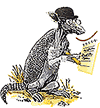
Question by Frontier Reporter, Summer 1869, (almost daybreak):
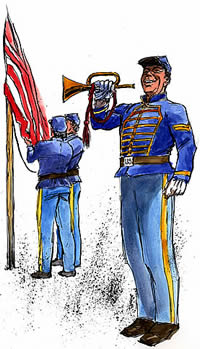
Pardon me, you with the bugle! Can you tell our readers what you do here at Fort Griffin?
The Army Bugler answers:
With all due respect, I can give you one minute—and I mean one minute—of my time. I am a very busy man. My commanding officer, Capt. John Lee, insists that I keep on schedule—and the sun is growing lighter as we speak.
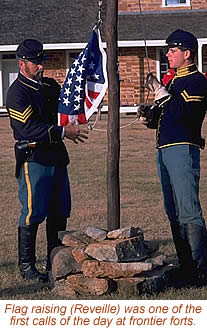
All right—I'll try to make it fast. My name is Sergeant Toby Lark. I serve with the Fourth Cavalry of the United States Army. I just got promoted to camp bugler. The bugler who had the job before can't bugle anymore. He got into a fistfight over at the Bee Hive Saloon in town and knocked out his two front teeth.
Being the official bugler is an important job. I am the camp clock. My bugle calls tell the soldiers when to eat, sleep, work, pick up their mail, march, and go to church. One day I had to blow my bugle twenty-five times. With me around, no one here needs to carry a timepiece. Everybody within earshot—even the ranchers nearby—knows the meaning of each different tune. Some have added their own words. Here's what I heard a few soldiers singing the other day when I played the notes of "mess call":
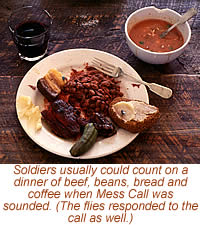
"Soupy, soupy, soupy—without a single bean; Porky, porky, porky—without a streak of lean; Coffee, coffee, coffee—without any cream."
I see you looking at my bugle. You're looking at the dent in its side, aren't you? You know how it got that dent? It happened at the Battle of Bull Run—during the War between the States, back in '61. My horse stepped on it. Just you try to stay on your horse and bugle and stay alive when people are taking potshots at ...

OOPS! I almost missed it. 6 o'clock, straight up—time to wake up the men. Here's "Reveille" for you. (The bugler raises himself to his full height, lifting the bugle reverently to his lips and blows the wake-up tune.)
There. Now the regiments will stir. If you care to follow me to the flagpole, you can watch us raise the colors and fire the cannon. After that, though, I must take leave of you. The men will have shaken off their sleep and assembled onto the parade ground for roll call. Then it will be time for me to blow my bugle again: 6:15 Stable Call. The first thing we do every morning is to check on our horses. We'd be nothing without our horses. This Texas frontier is wild and wooly. Without good horses, we can't do what we came west to do—protect the settlers from danger.
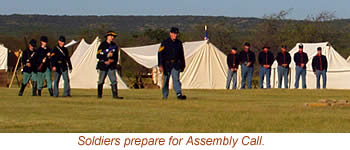
Drills began at Ft. Griffin after breakfast. After washing down their usual meal of beef, bread, and potato hash with cups of strong, black coffee, officers and enlisted men reluctantly left their separate mess halls to drill on the parade ground. Morning drills consisted of a solid hour of continual marching and countermarching. The soldiers hated it. In an attempt to keep their soldiers happy, some drill captains became creative. For instance, Capt. George Arme at Ft. Stockton ordered his mounted troopers to charge and "behead" wooden posts topped with bundles of straw. This made for fine entertainment—for both soldiers and civilians.
Credits and sources: Character dialogue by Lisa Waller Rogers; top painting by Charles Shaw; audio tape of bugle calls courtesy of Fort Davis NHS and the National Park Service; list of calls courtesy of Lester Galbraith; photos of flag raising and mess table from Fort Richardson SHS, courtesy TPWD; photo of assembly call at Fort Griffin by Susan Dial. | ||||||||||||||||||||||||||||||||||||||||||||||||||||||
